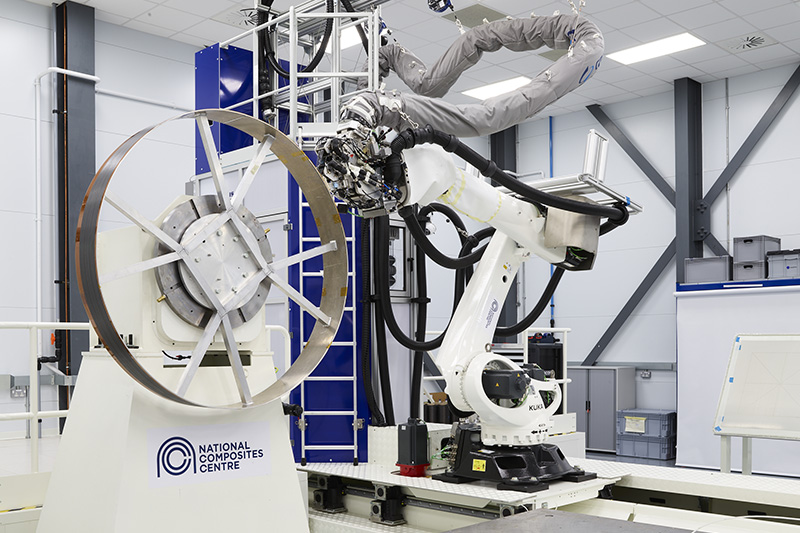Ceramic matrix composites manufacture automated
Engineers at the UK National Composites Centre (NCC) are claiming a European first by manufacturing ceramic matrix composites (CMCs) using an automated fibre placement (AFP) technology.

A novel, oxide-based, ceramic towpreg material from manufacturer 3M, USA, was shown to be usable for automated deposition.
'Conventional CMCs are laid up by hand and notoriously inconsistent leading to variable properties, they’re also very expensive,' says Dr Dave King at the NCC. King said that the towpreg reduces manual handling variation and waste. 'Conventional materials can give up to 40% material waste, whereas with the towpreg, we only saw ~2% wastage.'
As opposed to an 800°C limit for conventional nickel superalloys, oxide-based CMCs can operate at 1,000°C, potentially improving aerospace engine performance as well reducing emissions. 'CMCs enable higher operating temperatures while being lighter than their metallic counterparts, about one-third of the weight,' King says.
However, uptake is limited to high-value applications such as heat shields and turbine vanes. AFP technology should reduce the cost, attracting industries using high-temperature resistant components.
The project has adapted AFP technology, where an automated robot arm with a roller controls material deposition to achieve consistency. King explains that this is done by precise material placement for fibre alignment, a temperature-controlled head for reproducible temperatures, and controlling the pressure.
Processing parameters – e.g. speed, heat and compaction force – that affect material deposition and quality are being investigated.
While limited by intellectual property they, 'can share that increased levels of heat were required for processing a ceramic due to its low thermal conductivity, heat capacity and reflectivity'.
Optimal deposition parameters will reduce variability, a barrier to adoption, and could reduce costs and waste.







